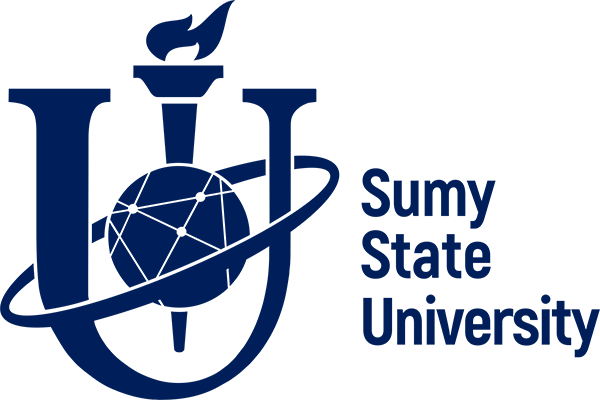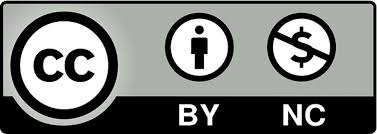LITERARY APPROACH TO THE THEORY OF ARTISTIC TRANSLATION
Keywords:
Fiction, literary translation, translation process, linguistic phenomena, linguistic approach, literary approach, contrastive translation.Abstract
The research is devoted to substantiating the problem of conveying the individual originality of authentic works into another language as one of the most important issues of literary translation. The author analyzes the origin and development of translation thought and theoretical requirements for Ukrainian translators. The publication shows that throughout the centuries-long history of translation, attempts have been made to theoretically understand and explain the activities of translators, formulate criteria for assessing the quality of translations, and identify factors that influence the course and outcome of the translation process. The author determines that the study of translation from the literary point of view implies the need to consider linguistic phenomena and analyze and evaluate the language means used by translators. The role of translation of fiction of a particular country, reinterpretation or misrepresentation of the original work in translation is also associated with using certain linguistic means. The study of translation itself is impossible without studying its linguistic nature. In a literary work of art, all components of the form, from composition to rhythm and intonation, are aesthetically significant and serve to express the artistic content. The author substantiates the thesis that when translating a literary text, the process of communication (author - translator - recipient) also includes such components as comprehension of the inner, deep, mysterious and hidden meaning signaled by the psychotype of an individual author which is also marked by the national features of the community he represents in his work. It should be noted that within the theory of literary translation there are two main approaches to considering translation problems: linguistic and literary studies. Considerable attention is paid to contrastive translation, application of the principles of anthropocentrism, adaptability and variability.References
Bilous O. M. (2013). Teoriia i tekhnolohiia perekladu: navch. posib. Kirovohrad, RVV KDPU im. V. Vynnychenka, 200 s.
Hadamer H. H. (2000). Istyna i metod. Osnovy filosofskoi hermenevtyky / H. H. Hadamer. K. : No knyha, T. 1. 425 s.
Hrytsiutenko V.I. (2001). Do pytannia pro kontseptsiiu estetychnoi rivnodii oryhinalu i perekladu / V. I. Hrytsiutenko // Inozemna filolohiia. Resp. mizhvidomchyi naukovyi zb. Vyp. 101. 295 s.
Hromiak R. (2002). Literaturoznavcha komparatyvistyka ta perekladoznavstvo: dotychnist, peretyny, kolizii / R. Hromiak // Slovo i chas. № 8. 321s.
Zasiekin S. V. (2012). Psykholinhvistychni universalii perekladu khudozhnoho tekstu: monohrafiia. Lutsk: Volyn. nats. un-t im. Lesi Ukrainky, 272 s.
Zorivchak R. P. (2015). Realiia i pereklad / R. P. Zorivchak. Lviv: Vyd-vo pry Lviv. un-ti, 1989. 237 s.
Kozak T. B. (2015). Osoblyvosti khudozhnoho perekladu. Naukovi Natsionalnoho universytetu «Ostrozka akademiia». Seriia «Filolohichna». Vyp. 51. S. 221–223.
Koptilov V. V. (2012). Khudozhnii pereklad i strukturna typolohiia. Movoznavstvo. 1969. № 5. S. 29–35.
Lyntvar O. M. (2012). Do problemy khudozhnoho perekladu. Naukovi zapysky Natsionalnoho universytetu “Ostrozka akademiia”. Seriia: Filolohichna. № 30. S. 144–147.
Myroshnychenko V. V. (2001). Khudozhnii pereklad – vichnyi dvyhun mizhkulturnoi komunikatsii / V. V. Myroshnychenko // Visnyk Sumskoho derzhavnoho un-tu. Seriia: Filolohichni nauky. № 5 (26). 225 s.
Pushyk N. V. (2022). Ooblyvosti perekladu khudozhnikh tvoriv. Naukovyi visnyk Mizhnarodnoho humanitarnoho universytetu. Ser.: Filolohiia. № 54. S.208-211. https://doi.org /10.32841/2409-1154.2022.54.50
Selivanova O. (2012). Svit svidomosti v movi. Problemy perekladoznavstva. Cherkasy. S. 445–470.
Strikha M. (2006). Ukrainskyi khudozhnii pereklad: mizh literaturoiu i natsiietvorenniam / M. Strikha // Nash chas. K.: Fakt. 344 s.
Terekhova S. I. (2014). Osnovy perekladoznavstva: navch. posib. dlia studentiv VNZ zi spetsialnosti “Pereklad”. Vyd. 2-he, vypr. I dopovn. Kyiv: Vyd. tsentr KNLU. 248 s.
Shvachko S. O. (2019). Obiekty perekladoznavstva: monohrafiia / S. O. Shvachko, I. K. Kobiakova, T. O. Anokhina.Sumy: SumDU.222 s.
Shemuda M. H. (2013). Khudozhnii perekladu yak vazhlyvyi chynnyk mizhkulturnoi komunikatsii. Naukovi zapysky NDU im. M. Hoholia. Seriia: Filolohichni nauky. Knyha 1. S. 164–168.
Baker M., Saldanha G. (2003). Routledge Encyclopedia of Translation Studies. 698 p.
Lefevere A. (1992). Translating Literature: Practice and Theory in a Comparative Literature Context. New York: The Modern Language Association of America. 165 p.
Pym A. (1992). Translation and Text Transfer. Frankfurt-Main, Berlin; Bern; New York: Peter Lang, 228 p.
Płońska D. (2014). Strategies of Translation. Psychology of Language and Communication. 2014. Vol. 18, no. 1. P. 67–74. URL: https://doi.org/10.2478/plc-2014-0005 (date of access: 22.11.2024).













